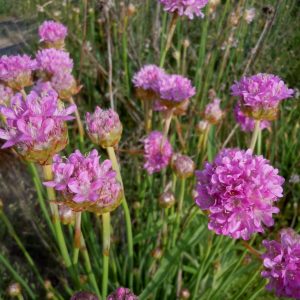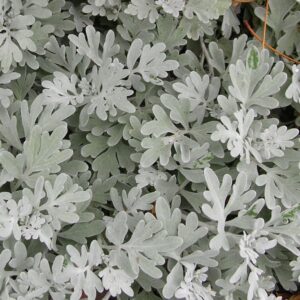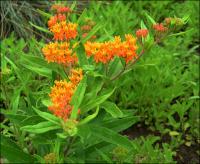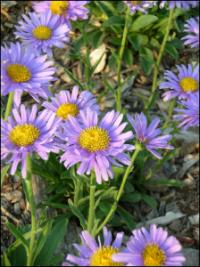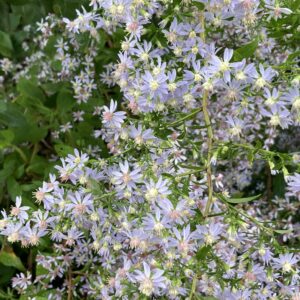Drought, Xeric & Dry Soil Plants
Showing 9–16 of 126 results
-
Arcanthemum articum Arctic daisy Z 3- ?
Closely-packed groundcover like a rug of small, classic white daisies with yellow centers.
Closely-packed groundcover like a rug of small, classic white daisies with yellow centers.
Size: 6-18” x spreading
Care: sun to part shade in moist well-drained to well-drained soil
Native: Western Canada to Alaska, North-east Europe to Japan
Wildlife Value: drought tolerantBy 1735
-
Armeria pseudoarmeria syn. A. formosa syn. A. latifolia, A. alpina Alpine thrift, Giant thrift Z 5-7
Carmine-pink balls atop stems and taller than grass-like foliage flowering in June and sporadically all summer
OUT OF STOCK
Carmine-pink balls atop stems and taller than grass-like foliage flowering in June and sporadically all summer
Size: 12” x 8”
Care: full sun in well-drained soil, heat and drought tolerant
Native: So. EuropeIn gardens since 1740. Per Wm Robinson this plant: “one of the best hardy flowers from southern Europe and should be in every collection.”
-
Artemisia stellerana Beach wormwood, Dusty miller Z 3-7
Intricate, embroidery-like, felty-white foliage
Grown for its intricate, embroidery-like, felty-white foliage
Can not ship to: Maryland
Size: 24” x 12”
Care: sun in moist well-drained to dry soil
Native: naturalized in North America from Massachusetts to DelawareArtemisia named for the wife of Mausolus, king of Caria, who began using another Artemisia. Miller 1768. Collected from the wild by 1842. Recommended by Gertrude Jekyll to use on the edges of gardens, 1908 L.H. Bailey (1933) described it as “attractive for its whiteness. Useful for borders.”
**LISTED AS OUT OF STOCK BECAUSE WE DO NOT SHIP THIS ITEM. IT IS AVAILABLE FOR PURCHASE AT OUR RETAIL LOCATION.
-
Asclepias tuberosa Butterfly weed, Pleurisy-root Z 4-9
Gorgeous - July - September bright orange cymes
OUT OF STOCK
Gorgeous – July – September bright orange cymes
Size: 2-3' x 12"
Care: Sun in well-drained to moist well-drained soil
Native: East and south North America, Wisconsin native
Wildlife Value: Host for Monarch caterpillars and its nectar is a favorite for 13 different butterflies: 4 Swallowtails, 2 Fritillaries, Checkered white, Spring azure, Small copper, Sachem, Monarch, and Coral and Gray hairstreaks. Attracts Ladybugs that eat many insect pests.
Awards: Great Plants for Great Plains; Perennial Plant Assn. Plant of the Year 2017.Named after Asclepias, a Greek god of medicine. Omaha Indians ate the raw root to cure bronchial and pulmonary ailments, their Shell Society was the authorized guardian of the plant, taking 4 days to dig, prepare and distribute the root. Most important medicine for Menominee Indians. The Iroquois smashed roots on legs to impart strength to runners. Navajo cured coyote bites and flu with Butterfly weed. HoChunk placed masticated root into wounds. Collected and sent to England by Rev. John Banister in colonial Virginia c. 1680. Cultivated by Jefferson. Pressed specimen in Emily Dickinson’s herbarium.
-
Aster alpinus Alpine Aster Z 5-7
Frilly little daisies, May-June, lavender, pink or white
Frilly little lavender daisies, May-June. Plant where they will be seen in the front of the garden.
Size: 6" x 12"
Care: Full sun well-drained soil.
Native: Rockies
Wildlife Value: attract butterflies
Awards: England’s Royal Horticultural Society Award of Merit.
Size: Border/Rock gardensAster means star, referring to the flower’s form. Listed in Philip Miller’s Gardeners’ Dictionary 1768: “Grows naturally upon the Alps… at the top of each stalk is one large blue flower…this flowers in June…”
-
Aster cordifolius syn. Symphyotrichum cordifolium Blue wood aster Z 3-8
Heart-shaped foliage smothered with blue daisies from late summer into fall, perfect companion for anemones.
Heart-shaped foliage smothered with blue daisies from late summer into fall, perfect companion for anemones.
Size: 2-3' x 2-3'
Care: Sun to full shade in moist well-drained to dry soil
Native: Canada to Florida, west to Oklahoma, Wisconsin native
Wildlife Value: Aster species are nectar sources for many butterflies – Checkered white and Checkered skippers, Spring azure, Pearl crescent, Buckeye, Painted lady, Fiery skipper, Sachem, Sleepy orange, Silver-spotted skipper and Monarch.Aster means star, referring to the flower’s form. Winnebago used this in the sweat bath. 1st described by French botanist Jacques Philippe Cornut in 1635. Likely collected and transported from Canada to France by Samuel de Champlain. Grown in Jardin du Roi in Paris.
-
Aurinia saxitilis syn. Alyssum saxatile Basket of Gold Z 4-7
Many 4-petaled taxi-cab yellow flowers clusters atop each stem like a cloud over the welcoming spring.
Many 4-petaled taxi-cab yellow flowers clusters atop each stem like a cloud over the welcoming spring.
Size: 10" x 12"
Care: Full sun well-drained soil, cut back after flowering to maintain compact form. Drought tolerant
Native: Central and southeastern Europe
Awards: England's Royal Horticultural Society Award of Garden MeritThe ancient Greeks may have used this to cure hydrophobia. English garden cultivation since 1710. Grown by Washington at Mount Vernon.
-
Baptisia australis syn. Saphora australis False Indigo Z 3-9
Foot-long spires of indigo blue pea-like flowers (it’s a legume) in June followed by ornamental black seed pods on this perennial that looks like a shrub. Internationally known garden designer Piet Oudolf’s 100 “MUST HAVE” plants, Gardens Illustrated 94 (2013).
Foot-long spires of indigo blue pea-like flowers (it’s a legume) in June followed by ornamental black seed pods on this perennial that looks like a shrub. Internationally known garden designer Piet Oudolf’s 100 “MUST HAVE” plants, Gardens Illustrated 94 (2013).
Size: 3' x 3'
Care: Full sun in well-drained soil. Heat and drought tolerant.
Native: Eastern United States, Wisconsin native.
Wildlife Value: Food source for several caterpillars and nectar for a number of butterflies. Deer resistant.
Awards: Received England’s Royal Horticultural Society Award of Merit. Perennial Plant Association Plant of the Year Award, 2010. Missouri Botanic Garden Plant of MeritBaptisia is Greek meaning to dye referring to use of the plant as a substitute for indigo dye. Cherokee used Baptisia australis for a number of illnesses: cease mortification, cure toothaches. Collected by John Bartram (1699-1777) plant explorer and colonial nurseryman by 1748.


